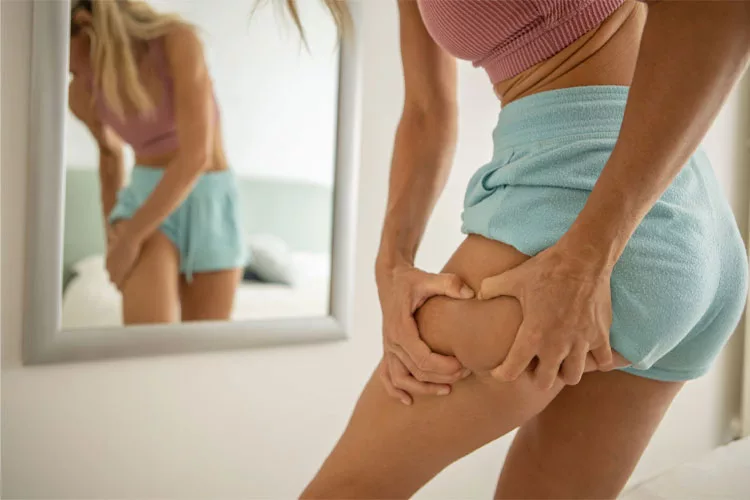Leg Liposuction Turkey
One of the most popular ways to get rid of fat, especially for women, is leg liposuction. As summer approaches, people notice their legs more, and that can lead to problems. Having thick legs or legs that look larger than the body can cause both psychological and physical problems for women.
What is Leg Liposuction?
It’s a plastic surgery procedure that reduces fat deposits in the leg area and makes the legs look thinner and more defined. This operation is usually performed for fat accumulated on the inner and outer parts of the legs, around the knees, and sometimes on the ankles. With the liposuction method, the fat in these areas is removed in a controlled manner by experienced surgeons.
Clinic Health Beauty runs a leg liposuction plan in Istanbul, Turkey. Your leg liposuction operation is done by an experienced surgeon in a private hospital.
For leg liposuction, we’ve got a 5-night Istanbul, Turkey travel plan ready for you. You’ll spend one night in the hospital and four nights at your hotel or home. We highly recommend a five-night follow-up. It’s important to consider all the risks. For this reason, we suggest you don’t go back to your country or another city for four days after the operation.
How is Leg Liposuction Performed?
While leg liposuction may seem straightforward, it’s important to review all the details before the procedure. We can break down the leg liposuction process into three stages: preparation, operation, and recovery.
Stage 1: Preparation
If you want leg liposuction, you’ll need to fill out the health screening form completely and accurately. Along with the form, you’ll need to send in leg photos and a leg video in a clear and understandable way. The plastic surgeon will evaluate all this information and decide whether the leg is suitable for liposuction. In some cases, it may be decided that the patient would benefit more from leg lift surgery.
The patient is given a full rundown of the rules they need to follow before the operation, including not using blood thinners or birth control pills and not smoking.
The surgery is done under general anesthesia, so the patient should stop drinking water and eating for eight hours before the operation.
Stage 2: Leg Liposuction Operation
The surgeon comes to your room on the day of surgery and makes a few quick sketches of your legs. They’ll also go over the areas from which they’ll be removing fat.
The operation takes about an hour or so under general anesthesia.
A thin tube is put under the skin to suck out the fat. The surgeon moves the tube back and forth to break down the extra fat and remove it with an aspirator.
Once the procedure is done, the incisions are closed and bandaged. The patient will wear a compression garment or corset to reduce swelling and support the shaping process during the healing process.
Stage 3: Recovery Period
The healing process varies from person to person, but it usually takes several weeks. During this time, you might have some swelling and bruising, but these will go down over time. It’s important to follow your doctor’s instructions to avoid heavy activities and wear compression garments for a certain period of time.
After leg liposuction, it’s a good idea to stay active in your hotel or at home. Short walks will help your blood flow and reduce risks, especially embolism. You should wear your leg corset for about a month.
After your leg liposuction, you should get some lipo drainage massages. These massages will help your body heal faster and reduce fluid build-up in your leg.
If you’re not happy with the shape of your legs and want to get rid of excess fat, leg liposuction could be a good option for you. But it’s important to meet with an experienced plastic surgeon to discuss your expectations and possible results in detail before you go ahead.
Is Leg Liposuction Risky?
The legs, like other parts of the body, have a lot of nerves. Nerves in the legs are really important for controlling muscle movements, transmitting sensory information and providing reflex responses. Especially the legs have lots of important nerves and nerve branches.
There’s a chance of damaging nerves during leg liposuction, but an experienced surgeon can help to minimise this risk. Symptoms of nerve damage may include:
Numbness or Tingling
You might experience a loss of sensation or tingling in the area of the damaged nerve.
Pain
If you have nerve damage, you might experience sharp, burning, or pinprick pain in your leg.
Muscle Weakness
If the nerves that control the muscles in the arms and legs are damaged, the muscles themselves will become weaker.
Reflex Changes
Nerve damage can affect reflexes, making them either less or even disappear completely.
Reduce the Risks of Leg Liposuction
Choosing an Experienced Surgeon: Choosing an experienced and well-trained surgeon reduces the risk of nerve damage.
Detailed Planning: The surgeon’s knowledge of anatomy and careful planning of the procedure is important.
Precise Techniques: The use of precise techniques during liposuction helps to protect the nerves.
If you’re thinking about getting a leg liposuction procedure, it’s a good idea to chat with your surgeon about the potential risks and how to manage them. That way, you’ll be in the know about any possible complications that might arise during and after the procedure.
General Risks of Leg Liposuction
Infection
It’s always possible to get an infection after a surgical procedure. Antibiotics and sterile surgical techniques can help to reduce this risk.
Bleeding
It’s possible that you might bleed during or after liposuction. This is usually pretty minimal, but it can be more serious in some cases.
Anesthesia Complications
There are risks associated with both general and local anesthesia. These risks depend on the experience of the anesthesiologist and the patient’s health status.
Irregular Contours
If the oils aren’t evenly absorbed, there might be some irregularities and fluctuations on the skin surface.
Loss of Skin Elasticity
It’s possible that the skin might sag or loosen after fat removal. Before the operation, the surgeon should decide whether the patient is suitable for leg liposuction in this regard.
Nerve Damage
There’s a chance that nerves could be damaged during liposuction, which could result in temporary or permanent loss of sensation.
Seroma
Once the fat is gone, a seroma might form because of fluid building up in the spaces. This fluid can usually be drained with a needle.



